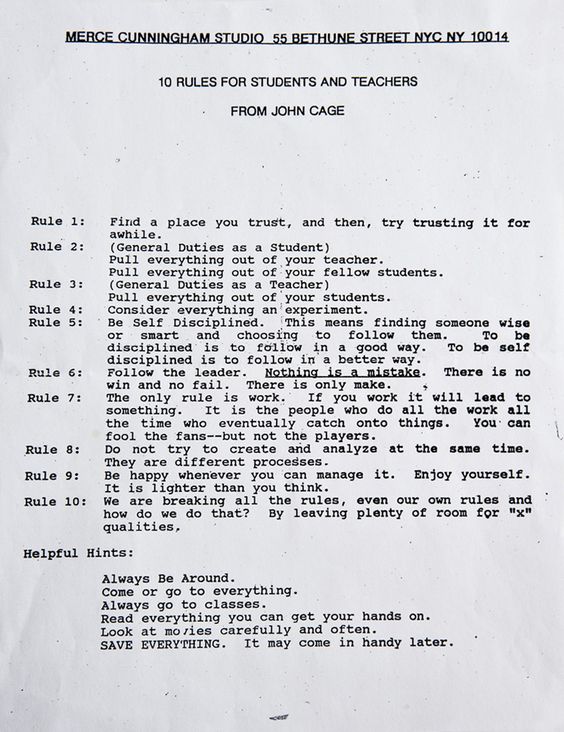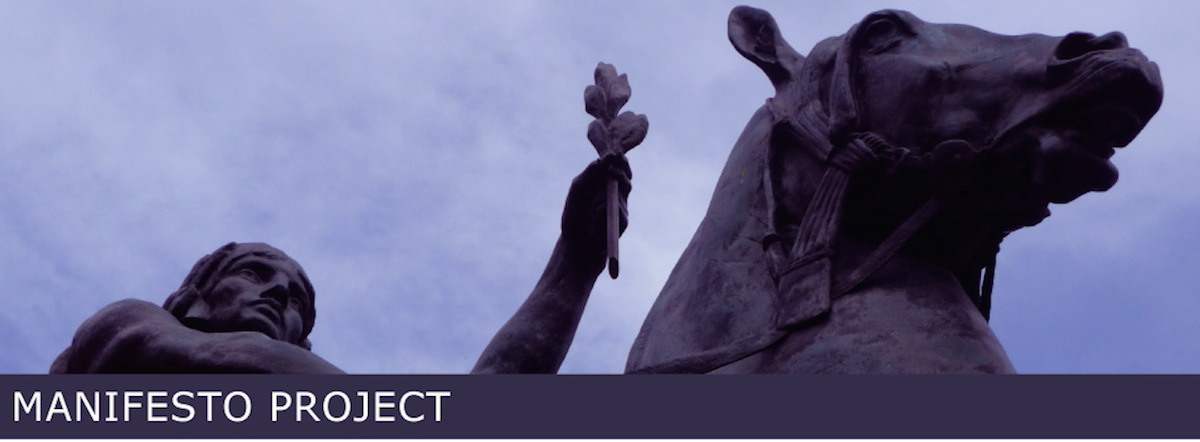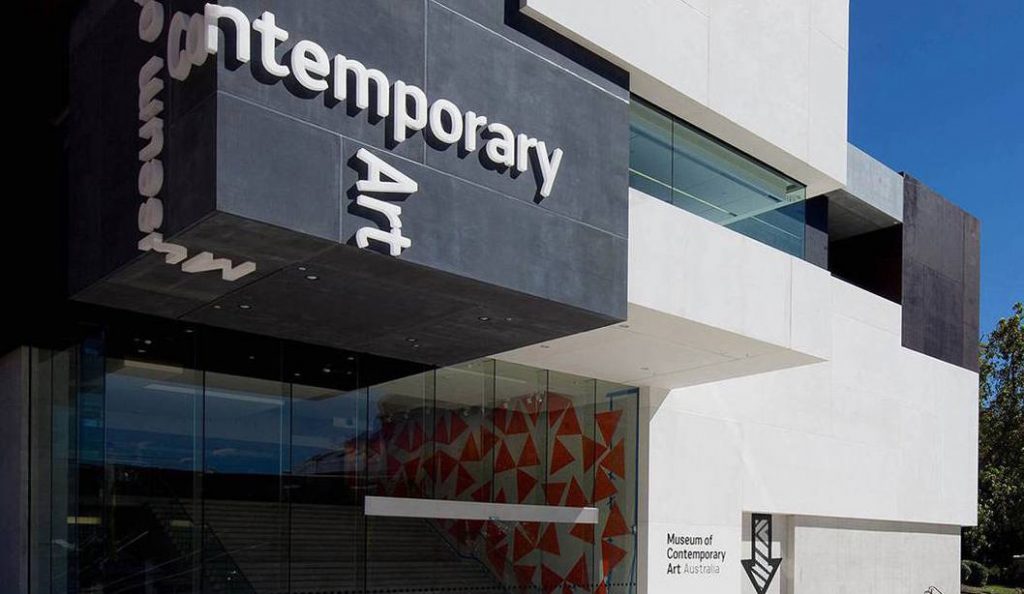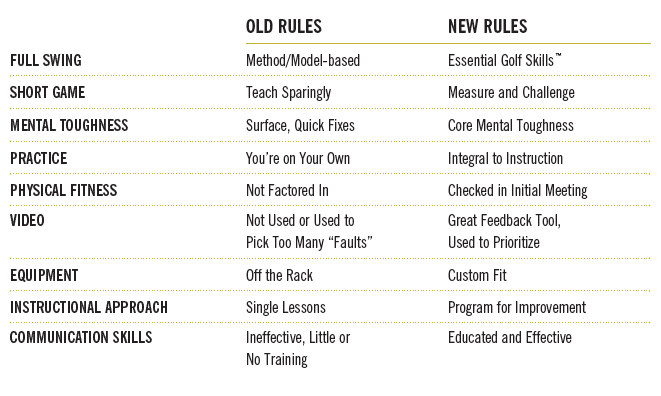Creator
Sister Mary Corita Kent was an American Catholic religious sister, artist and educator.
Note: While this manifesto is attributed to musician John Cage, Brain Pickings suggests it originated with Sister Corita Kent.
Purpose
Corita Kent created the manifesto as part of a class project. It later became the official rules of the art department at LA’s Immaculate Heart Convent and was popularized later by Cage.

Manifesto
RULE ONE: Find a place you trust, and then try trusting it for awhile.
RULE TWO: General duties of a student — pull everything out of your teacher; pull everything out of your fellow students.
RULE THREE: General duties of a teacher — pull everything out of your students.
RULE FOUR: Consider everything an experiment.
RULE FIVE: Be self-disciplined — this means finding someone wise or smart and choosing to follow them. To be disciplined is to follow in a good way. To be self-disciplined is to follow in a better way.
RULE SIX: Nothing is a mistake. There’s no win and no fail, there’s only make.
RULE SEVEN: The only rule is work. If you work it will lead to something. It’s the people who do all of the work all of the time who eventually catch on to things.
RULE EIGHT: Don’t try to create and analyze at the same time. They’re different processes.
RULE NINE: Be happy whenever you can manage it. Enjoy yourself. It’s lighter than you think.
RULE TEN: “We’re breaking all the rules. Even our own rules. And how do we do that? By leaving plenty of room for X quantities.” (John Cage)
HINTS: Always be around. Come or go to everything. Always go to classes. Read anything you can get your hands on. Look at movies carefully, often. Save everything — it might come in handy later.
Source
https://en.wikipedia.org/wiki/Corita_Kent
Comment
It took a while for me to track down the true source of this manifesto. While it has John Cage’s name on it both in the title and in Rule #10, surprisingly he is not the originator.
This points to how things evolve as they are created and shared. From the humble beginnings as a class project, it was adopted by the school itself and then shared more widely when a renowned figure like John Cage becomes involved.
This manifesto also shows the variation possible in a set of rules. They are mostly not specific rules like ‘no running’ that is common at a public swimming pool.
Instead, it has a set of more general guidelines such as (my favourite) “consider everything an experiment”.
This reflects the different tight (no running) or loose (experiments) rules that you can have in your manifesto.
I like to think of this as flavours – you can have a spicy or sweet meal and a tight or loose set of rules.
More
Geoff McDonald – Seven Rules of Done (loose rules)
James Naismith – The 13 Rules of Basketball (tight rules)








